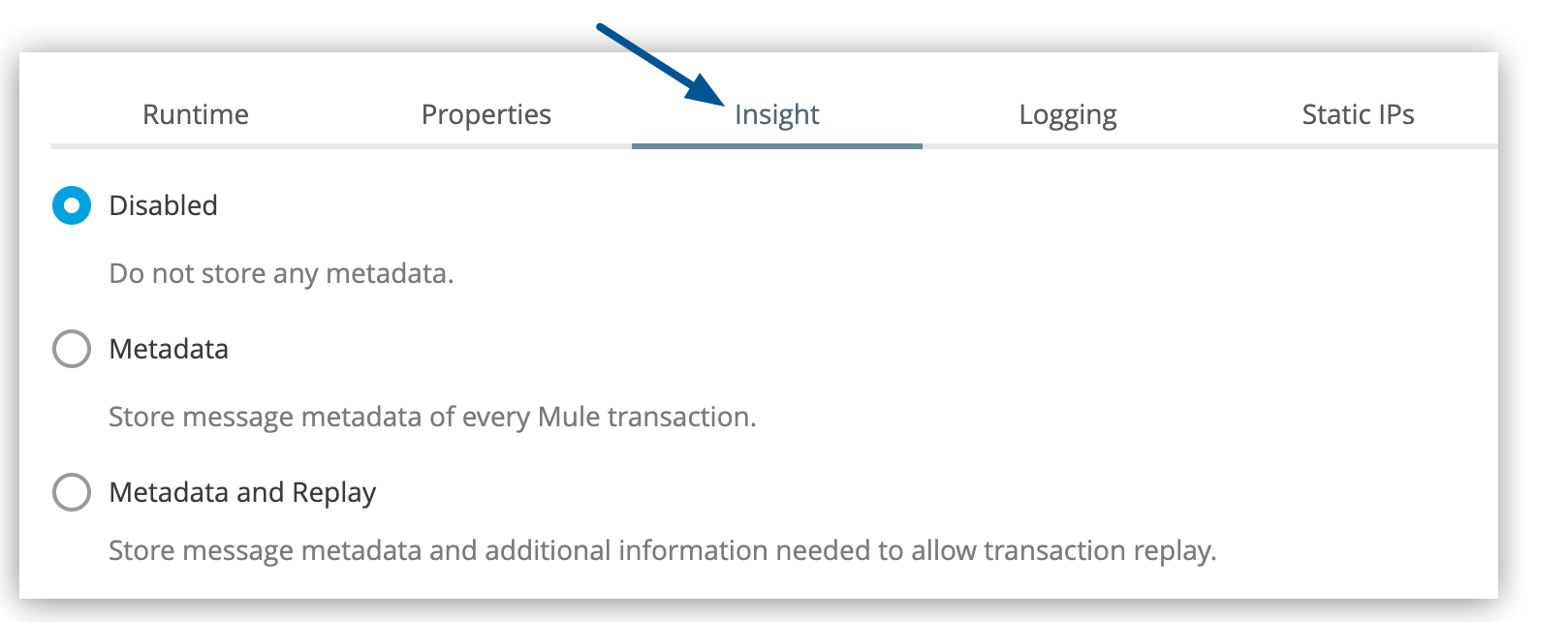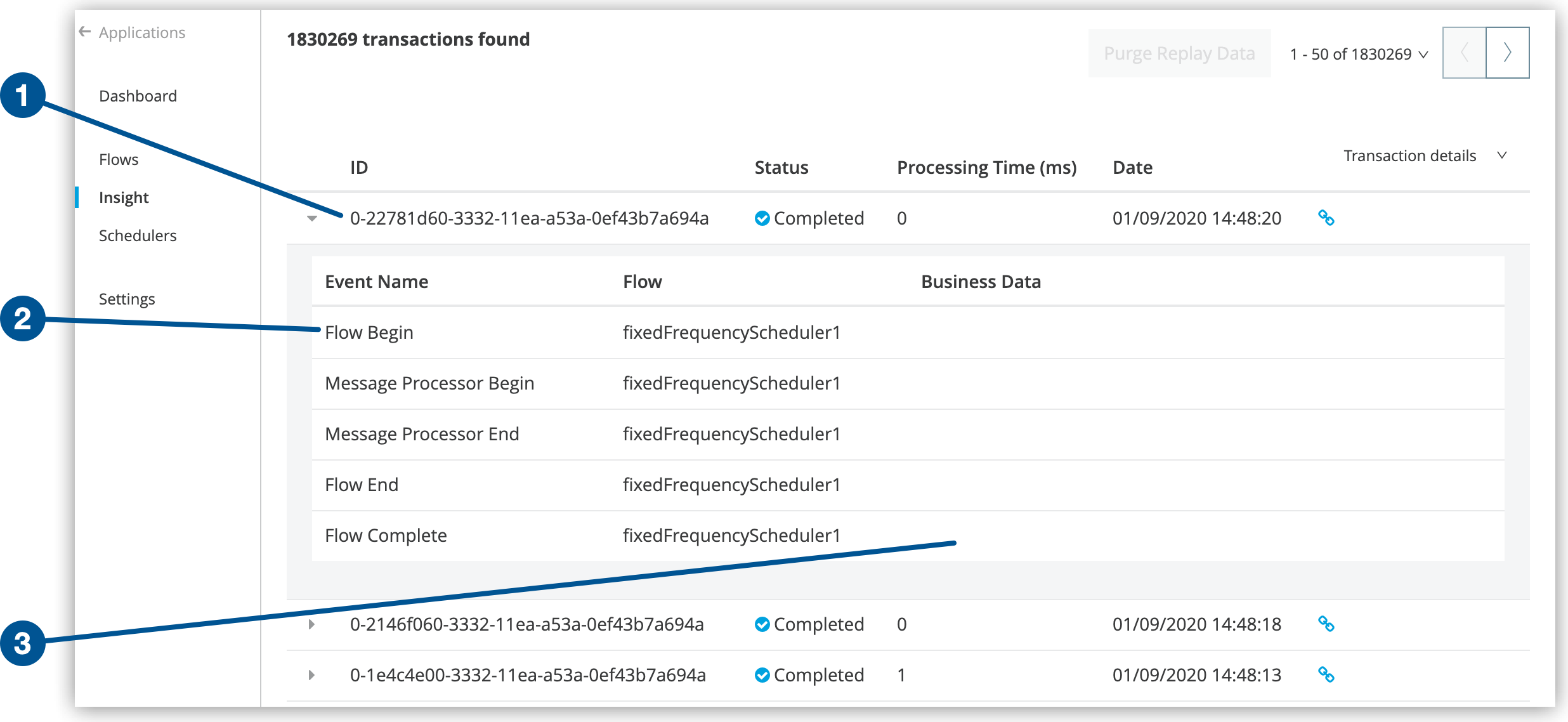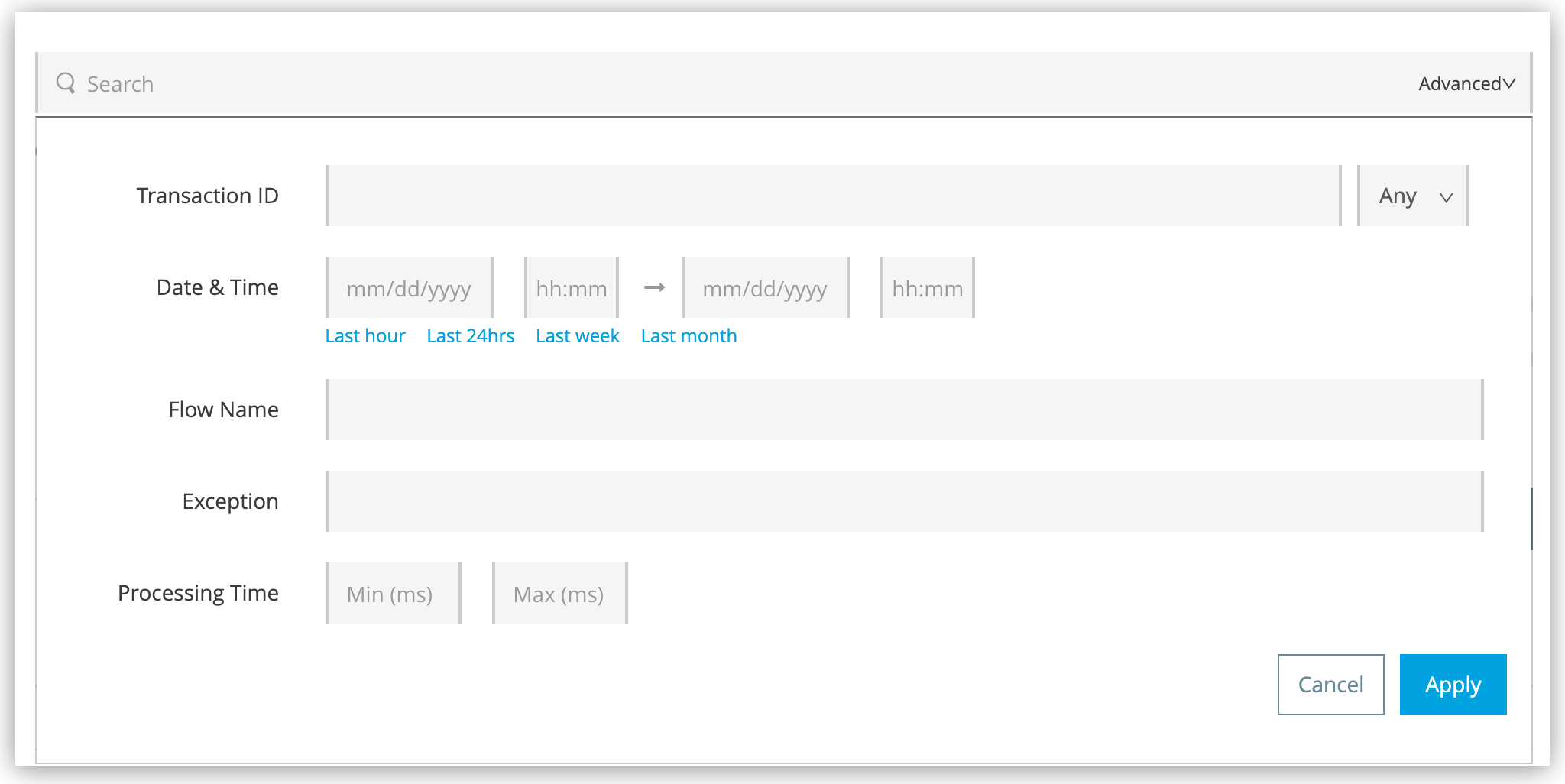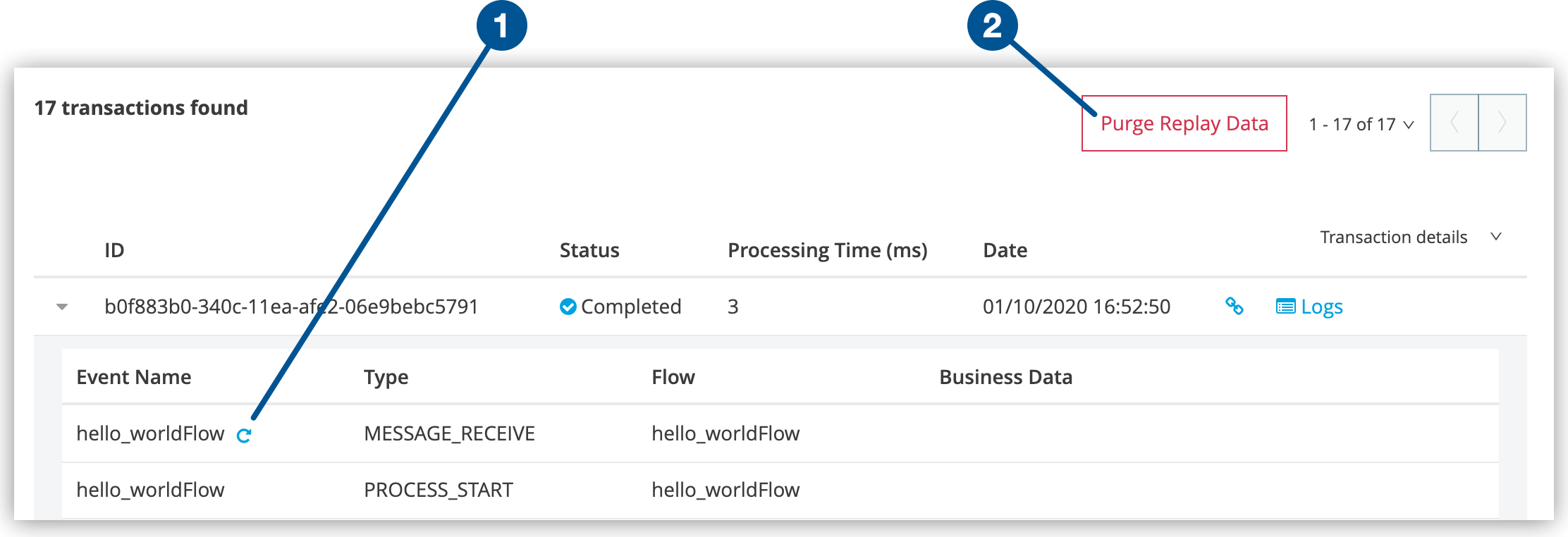Insight is a troubleshooting tool that provides in-depth visibility into business transactions and events on your Mule apps deployed to CloudHub and on-premises servers. Insight tracks everything your data does in an app so you can find and recover from errors that occur during message processing.
For Mule 3 apps and flows with inbound endpoints deployed to CloudHub, Insight supports the ability to replay transactions for advanced error recovery.
Replay is not supported for Mule 4 apps or for free or trial user accounts.
|
|
Enabling Insight can significantly impact data processing performance and memory consumption.
For this reason, do not enable Insight for long periods for production environments.
Use Insight only for troubleshooting specific transactions by searching for a transaction ID or a unique text string.
|
The Insight dashboard enables you to view events that occur within the flows that handle your business transactions.
You can drill down into event-related data to analyze the root cause of failures, isolate performance bottlenecks, and test for compliance with company procedures.
Insight helps you answer questions about your integrated apps, such as:
-
What happened with a particular transaction or synchronization?
-
When did the transaction occur? How long did it take?
-
What was the result of a transaction?
-
If something went wrong during processing, at what point did the failure occur?
After you enable Insight, the following items are tracked by default:
-
Data passing through endpoints (inbound and outbound) in your Mule applications
-
Flow initiation and completion
-
Custom business events that you embed in your Mule flows













